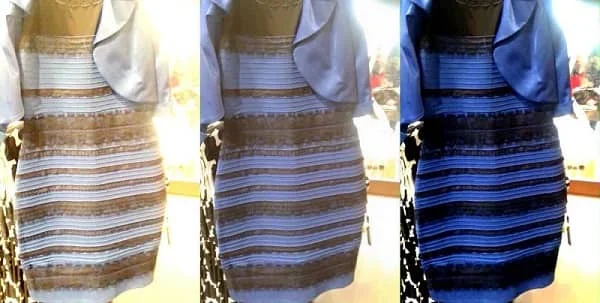Viral content is a type of content that users readily share without any requests or instructions, and it spreads across the internet from one person to another like a virus.
Any post on any social network, content on the media – advertisement, video, infographics – anything that involves people in the process or triggers emotions and a desire to share can go viral. It is wrong to think that creating a good video will be enough for the video to start promoting itself. Obviously, there are exceptions, but if you aim at creating a certain type of content, be ready to take some actions to start the viral spread.
But what makes viral content different? First of all, it brings out emotions, and here are the main reasons:
- It is funny, even absurd sometimes. It is good if a video features a celebrity, then the desire to share it is stronger.
- It is controversial. If the subject of a video causes discussions or makes you learn what other people think about it, it is good to make the video viral.
- It is a burning issue. Viral content doesn’t have to be entertaining. It can also cover some serious social topics.
- It involves everyone. This principle is used by flash mobs which pass the challenge over to new participants and, thus, send the flash mob message forward.
- It is extraordinary. If a photo or a video shows something astonishing, you can’t help but share it with others.
- It is heartwarming. Different things can be touching: from kids and kittens to heroic deeds.
Often viral content is created as a part of a promotional campaign for a person, brand, product, or service. If the plan is a success, the promoted object will get leads, clients and, what is most important, will become famous.
Unfortunately, the result of spreading the viral content is not always predictable: if for some reason, users don’t like the material, everything can go wrong. There is always a risk to hit the tsunami of people’s displeasure, develop a bad reputation, and get on the “bad boy” list.
Examples of successful viral content
Let’s review examples of content that went viral on different social networks.
An egg that was liked almost 54 million times on Instagram
On January 4th, 2019 on Instagram, the account @world_record_egg was created. It contained a photo of a chicken egg, and its caption called to beat the record by the number of likes and to make the post the most popular in the world. The mischief worked well. In 10 days the egg got 18.4m likes, and there are more than fifty million likes now. The main principle here is to do something stupid.

The account was created by a 29-year old advertiser Chris Godfree. Initially, he created that account because he wondered if he can beat Kylie Jenner’s record. After the successful experiment, an advertising campaign was launched on the Hulu streaming service to support the Mental Health America association that works with mental health issues.
Video post on Twitter that made everyone cry
A post made as a homework task by students from Missouri gained unbelievable popularity. It shows a classroom decorated for a party and a couple of sad students behind their desks. The caption said: “My professor threw a party instead of having a final, and no one showed up.”

The post has eight million views and it was shared almost seventy thousand times. In this case, it was the emotional aspect that made users share the video – they felt pity for the unlucky professor who decided to throw a party, but students ignored him.
Later the authors announced that it was all set up, and it was just an excellently done homework.
A video featuring a Zaz and Porsche hybrid assembly
In 2019 one of the most popular videos on Russain Twitter featured Belorussian craftsmen building an auto-chimera – the hybrid of a Porsche and ZAZ. People loved it so much that it was shared almost sixty thousand times. In fact, it worked very well for the author who is a famous car and motorcycle customizer.
Baby Games
For the promotion of the Olympic Channel media platform, a cute video was created showing what it would be like if kids took part in the Olympic Games. The video got fifteen million views.
The blue or white dress phenomenon
Yes, this is the dress that became a hot topic on social networks in 2015. It is an example of unexpected viral content.
It all started when a Tumblr user posted a photo asking her followers to answer the question: “What is the color of the dress?” That was how the debates started. Scientists trying to explain the phenomenon from a scientific point of view, celebrities, and even politicians joined them. The designer of the dress benefited the most – after the publication, all the dresses were sold out the next day within 30 minutes.

Important figures
The Buzzsumo company has decided to research to dispel the myths about viral content once and for all. They posted a public research report where they analyzed data of more than one hundred million posts for the years of 2017-2018. The results were surprising:
- Videos and music was the most common type of viral content.
- 25% of the studied viral content accounted for materials that inspire or arouse compassion and sympathy, 17% — for the content that makes you laugh, and 15% — for entertaining posts. -If we speak about text content, longreads containing more than three thousand characters are the most popular.
Buzzsumo has made another disappointing conclusion – 70% of all the content doesn’t make people want to share it.
But there is good news. People started paying more attention to the materials that remind them of studies or studies themselves. The thirst for knowledge is obviously a good thing.
What the advantages of viral content are
The first and most obvious advantage is that you will benefit if your content will go viral. If you are a public figure, people will start recognizing you and following you, you will have fans and will get mentioned on the media. If you own a brand, your sales will increase, you will get your audience, and your product or service name will be much talked about.
The second benefit, that was mentioned already, is an autonomous promotion with the help of people who are driven by emotions and want to share your content. This chain can be almost endless, and you will save lots of money on advertising.
But it is not that simple
It is true that if you achieve successful results, it may surpass your expectations. But it takes time and effort to achieve success. It is one thing when the content goes viral unexpectedly — it is like a spark of genius that can make a big hit on the Internet in a couple of hours. That’s what happened, for example, with the dress of the unknown color, which you can still come across now.
In any other case, virality is a hard-earned result achieved by authors, editors, marketers, PR people, and psychologists who are responsible for understanding what users might need. In fact, users are becoming pickier every year – studies show that the more sources of information appear, the fewer people share the information.





